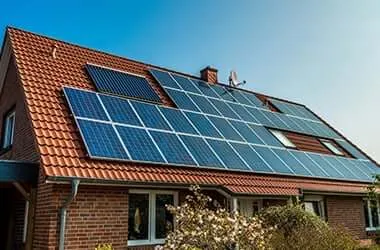Calculating the Expenses for Installing Solar Panels on Your Roof
The Cost to Add Solar Panels to Your Roof A Comprehensive Overview
As the world moves towards more sustainable energy solutions, many homeowners are considering the installation of solar panels on their roofs. This decision not only contributes to environmental conservation but also offers potential long-term savings on energy bills. However, the initial cost can be a significant factor in the decision-making process. In this article, we will delve into the costs associated with adding solar panels to your roof and the various factors that influence these expenses.
Understanding the Initial Investment
The cost to add solar panels to your roof can vary widely based on several key factors, including the size of the system, the type of panels chosen, the complexity of the installation, and your geographical location. On average, homeowners can expect to pay between $15,000 to $30,000 for a typical residential solar panel system. This price often includes the panels themselves, inverters, mounting equipment, and installation labor.
Size and Energy Needs
One of the primary determinants of cost is the size of the solar panel system required to meet your energy needs. A standard residential system might range from 5 kW to 10 kW, with larger systems requiring more panels and, consequently, a higher investment. To determine the appropriate size for your home, it is advisable to analyze your past energy bills and consult with a solar energy expert. They can help you determine the best system size based on your energy usage patterns and any future changes that might affect your needs, such as adding electric vehicles or increasing the size of your home.
Type of Solar Panels
The type of solar panels you choose also plays a crucial role in the overall cost. There are generally three types of solar panels monocrystalline, polycrystalline, and thin-film. Monocrystalline panels are the most efficient and tend to be the most expensive. They are made from single-crystal silicon, allowing them to generate more power in a smaller space. Polycrystalline panels are generally less expensive but also slightly less efficient than their monocrystalline counterparts. Thin-film panels are the least expensive and offer flexibility in application but usually require more space due to their lower efficiency.
cost to add solar panels to roof

Installation Costs
The complexity of the installation can affect the overall cost as well. If your roof is steeply pitched or if there are obstructions such as chimneys or skylights, installation may require additional labor and safety measures, thereby increasing expenses. Additionally, if roof repairs or reinforcements are needed before installation, this will add to the cost.
Incentives and Financing Options
While the upfront cost of solar panels can be daunting, various incentives can mitigate this expense. Many states and local governments offer tax credits, rebates, and grants to encourage the adoption of solar energy. The Federal Investment Tax Credit (ITC) allows homeowners to deduct a significant percentage of their solar installation costs from their federal taxes, providing substantial savings.
Moreover, financing options such as solar loans, leases, and power purchase agreements (PPAs) can make solar energy more accessible. These options enable homeowners to install solar panels with little to no upfront cost, paying for the system over time through monthly payments or by purchasing the energy produced.
Conclusion
Adding solar panels to your roof is a strategic investment that requires careful consideration of the associated costs. By understanding the factors that influence the overall expense—such as system size, panel type, installation complexity, and available incentives—you can make an informed decision that aligns with your energy needs and financial situation. As the demand for renewable energy continues to rise, the costs of solar technology are expected to decrease, making this an opportune time for homeowners to explore solar energy solutions.
-
String Solar Inverter: The High-Efficiency Solution for Smart Solar EnergyNewsJul.14,2025
-
Revolutionizing Rooftop Energy with the Power of the Micro Solar InverterNewsJul.14,2025
-
Power Independence with Smart Off Grid Solar Inverter SolutionsNewsJul.14,2025
-
On Grid Solar Inverter: Powering the Future with Smart Grid IntegrationNewsJul.14,2025
-
Monocrystalline Solar Panels: High-Efficiency Power for the Future of Clean EnergyNewsJul.14,2025
-
Bifacial Solar Panel: A Smarter Investment for Next-Generation Energy SystemsNewsJul.14,2025







